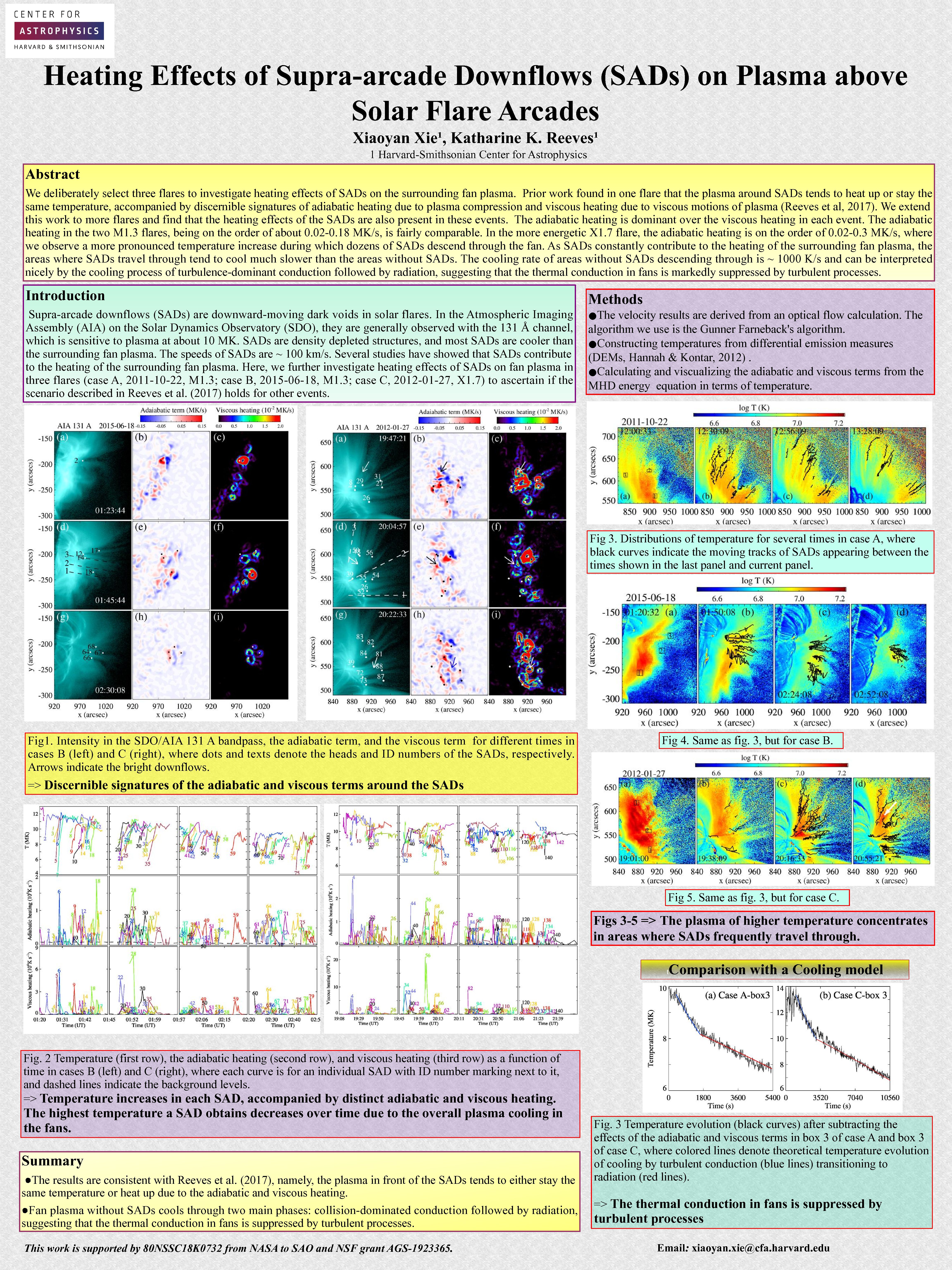Authors: Xiaoyan Xie (Harvard-Smithsonian Center for Astrophysics), Katharine Reeves (Harvard-Smithsonian Center for Astrophysics)
We deliberately select three flares to investigate heating effects of SADs on the surrounding fan plasma. Prior work found in one flare that the plasma around most SADs tends to heat up or stay the same temperature, accompanied by discernible signatures of the adiabatic heating due to plasma compression as well as viscous heating due to viscous motions of plasma. We extend this work to more flares and find that the heating effects of the SADs are also present in these events. The adiabatic heating is dominant over the viscous heating in each event. The adiabatic heating in the two M1.3 flares, being on the order of about 0.02-0.18 MK/s, is fairly comparable. In the more energetic X1.7 flare, the adiabatic heating is on the order of 0.02-0.3 MK/s, where we observe a more pronounced temperature increase during which dozens of SADs descend through the fan. As SADs constantly contribute to the heating of the surrounding fan plasma, the areas where SADs travel through tend to cool much slower than the areas without SADs, and the plasma of higher temperature ends up concentrating in areas where SADs frequently travel through. Additionally, the cooling rate of areas without SADs descending through is ~ 1000 K/s and can be interpreted nicely by the cooling process of turbulence-dominant conduction followed by radiation, suggesting that the thermal conduction in fans is markedly suppressed by turbulent processes.


